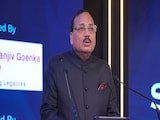The aviation industry is always keen to experiment with new design, especially in an era when calls are increasing to reduce carbon emissions. The latest that is being considered by giants like Airbus and Boeing is the "blended wing design". The next-generation aircraft is said to achieve 50 per cent less fuel burn and carbon emissions while offering an innovative design inside the cabin, like a movie theatre. CNN said that the new design is gaining traction among aviation enthusiasts and a California-based company JetZero aims to capitalise on that.
"We feel very strongly about a path to zero emissions in big jets, and the blended wing airframe can deliver 50 per cent lower fuel burn and emissions. That is a staggering leap forward in comparison to what the industry is used to," Tom O'Leary, co-founder and CEO of JetZero, told the outlet.
The new aircraft looks very similar to the design of the B-2 bomber, but the blended wing has more volume in the middle section.
The concept, however, is not new. CNN said the first time designers came up with the idea of blended wing was in late 1920s in Germany. The B-2 were inspired by the design created by American aircraft designer and industrialist Jack Northrop in 1947.
But over the years, the designers have perfected the blended wing design and JetZero said it has carried out more than 120 test flights between 2007 and 2012.
"An aircraft of this type would have a wingspan slightly greater than a Boeing 747 and could operate from existing airport terminals," the company said. It added that the plane would also "weigh less, generate less noise and emissions, and cost less to operate than an equally advanced conventional transport aircraft".
The design entails a wide, flattish fuselage that smoothly blends outward into a pair of wide wings, with no clear line separating the wing from the body.
American space agency NASA said the design helps reduce drag, thereby increasing fuel economy and creating larger payload (cargo or passenger) areas in the centre body portion of the aircraft.
JetZero said the first such futuristic jet will hit the skies by 2030. It is designed to replace the Boeing 767, aiming to carry at least 250 passengers and to offer a range of over 5,000 nautical miles.















